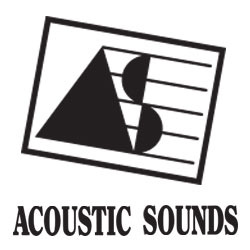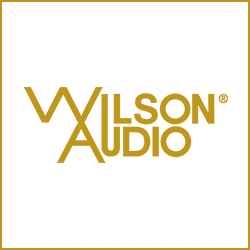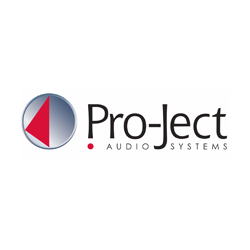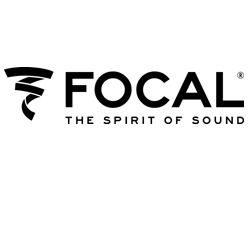Visiting recent analogue-laden hi-fi shows was enough to turn any Baby Boomer sullen with thoughts of mortality: the current revival of interest in the LP is due in no small part to new-born vinyl lovers too young to possess any experience of record care and handling methods.
You might think that the vinyl revival is down to solidarity among old-fart, pro-analogue audiophiles, but there aren’t enough of us to account for the sales of Sundazed’s magnificent LPs, or the tens of thousands of budget turntables sold by Pro-Ject. And how many 50-year-olds are buying hip-hop garage mixes on 12in vinyl singles, which keep pressing plants on 16-hour shifts? No, we have to turn to a wave of music lovers whose initial awareness of recorded material owes more to MP3 and CDs than to the 12in LP. They are the 21st-century equivalent of a modern car enthusiast who finds himself in possession of a vehicle with a starting handle.
To those of us who grew up in the years before CD arrived, record care is something mundane but crucial, behavioural patterns so basic we take them for granted. Moreover, we assume that everyone knows how to put a record on the platter and lower the stylus, just as we all know how to open a door. But record handling isn’t as “day to day” as opening a door.
“Regular” people who still use LPs don’t handle them with care. They treat them like the (fictional) idiot in a current speaker ad, with her jazz LPs splayed out on the floor, out of their sleeves. Record care is more of a skill or a talent or even an instinct of great import only to audiophiles and record collectors.
Am I exaggerating? Do any of you above the age of 35 remember being taught how to hold a record, clean off dust, balance a pickup arm, clean a stylus? Probably not, just as you don’t remember learning to walk, speak, or hold a fork. I’m certain my father taught me how not to ruin records, but I don’t remember when or how he did so.
I suspect that today’s 12–35-year-olds who are captivated by vinyl will either turn to parents or older siblings, or, in the case of the brave, plunge headfirst into fitting an arm and cartridge as I did when I bought my first “separates” system. In many cases, because the inspiration to “go vinyl” is acid/hip-hop/scratch singles, or a budding career as a deejay, or simply being seen with “cool” vinyl, record care will not be an issue. They’ll treat records the way they treat everything else: as something disposable. The under-35s I saw at hi-fi shows during 2002, though, were not reverse-baseball-cap Beavises but budding audiophiles – vastly outnumbered I’m sure by Beavises, but they are high-end audio’s next generation, and we should nurture them.
Someone really must produce a modern pamphlet on the basics of record usage and care. How to play them, how to maintain a turntable and cartridge, how to salvage worn or dirty second-hand discs, how to store them, how to align a cartridge, how to examine a stylus. Because the young people coming fresh to vinyl know only the easy convenience of CD, it would be tragic if the more hands-on nature of LPs proved off-putting, and that first major scratch plunged them into dismay. But I doubt that will happen. For the most part, I think these “late adopters” are charmed as much by the retro appeal, the funky sleeves, the manual labour, of records as they are by the sound. (And none of them will deny that a turntable looks a whole lot cooler than any CD player.)
What this new generation of vinyl users has that beats our “old ways” hands down is access to accessories and set-up tools that didn’t exist when vinyl was the dominant format. So much thought has gone into maintaining and extending the finite life of records, in the post-CD era, that we can now buy goodies we couldn’t imagine back in 1982.
True, I then used (and still cherish) the deliciously accurate, analogue-dialled Technics SH-50P1 Stylus Pressure Gauge—now a collector’s item—but is it a match for the Clearaudio Exact? This $400 gauge, with digital read-out and accuracy to 1/10th of a gram, is the easiest I’ve ever used. It may not look as funky as the Technics, being all Teutonically efficient and Bauhaus minimalist, but it does a more repeatable and dependable job. The Exact is so straightforward you don’t have to worry whether you calibrated it properly, or if the room temperature is affecting it. If you’d rather buy British, then Len Gregory, the Cartridge Man, has a digital stylus gauge, too, shaped like a four-inch record puck, with an LP-thick platform on which you lower the stylus. Said to be accurate to a 50th of a gram, it sells for $299.
Both Clearaudio and Len Gregory also provide set-up discs that spare you the need to scour used-record bins for circa-1975 test LPs. To the best of my knowledge, all of the classic test LPs are out of print; full marks to Gregory for working with the UK magazine Hi-Fi News to produce the Hi-Fi News Analogue Test LP, now in a second edition wryly sub-titled “The Producer’s Cut.” This gem contains a set-up template for correct cartridge overhang, a sheet of instructions with an article by the great John Crabbe (who invented the hanging-weight anti-skate device), and a battery of test tones that cover channel identification and balance, tracking ability, residual system noise, cartridge alignment, and more. The notes are so comprehensive, you don’t need a booklet on record care.
Clearaudio’s disc complements the HFN LP. The company, first and foremost a turntable, arm, and cartridge manufacturer, has cleverly combined a series of tests into the $150 Speed Strobodisc. In addition to serving as a precise strobe disc for correct speed adjustment, it also features a recorded groove for measuring noise, a groove that provides random noise for breaking in a cartridge, facility for setting correct anti-skating and—unique to Clearaudio—a way to compensate for the friction caused by vinyl-against-diamond and its effect on true speed. This is accomplished with a 300Hz test, which requires the company’s SpeedLight 300Hz laser at $100. And I remember using a table lamp and a cardboard strobe disc!
Although most arms come with their own set-up devices, Clearaudio also produces the Cartridge Alignment Gauge for $150, made from aluminium, with a precision-engraved strike plate and sliding cross-member for setting spindle-to-pivot distance. The cross-member is calibrated in millimetres for dialling in effective arm length, and it’s said to be ideal for all pivoted arms, especially those 9- or 10-inchers such as the Graham and the Rega.
These tools deal with one small part of record playback. The roundup barely scratches the surface, so to speak, but it’s a reminder why audio hobbyists always preferred vinyl to CD: The toys were cooler. Whole columns could be devoted to record clamps, replacement mats, such as the ever-astonishing RingMat, cleaning machines, too many fluids to list, sleeves, storage racks, cartridge demagnetizers, stylus cleaners, anti-static guns, carbon fibre brushes, and so on.
Of course, there are devices that have survived from the First Vinyl Epoch, and newcomers on their way to full-blown vinyl addiction will eventually discover the delights of VPI’s record-cleaning machine and rice-paper inner sleeves, as well as forgotten classics that turn up now and again on eBay. All of a sudden, your GeoDisc and Zerostat pistol and even your Cecil Watts DustBug have monetary worth. But you’ll only get my Technics stylus pressure gauge when you pry it from my cold, dead hands.
(The Absolute Sound, 2002)






















